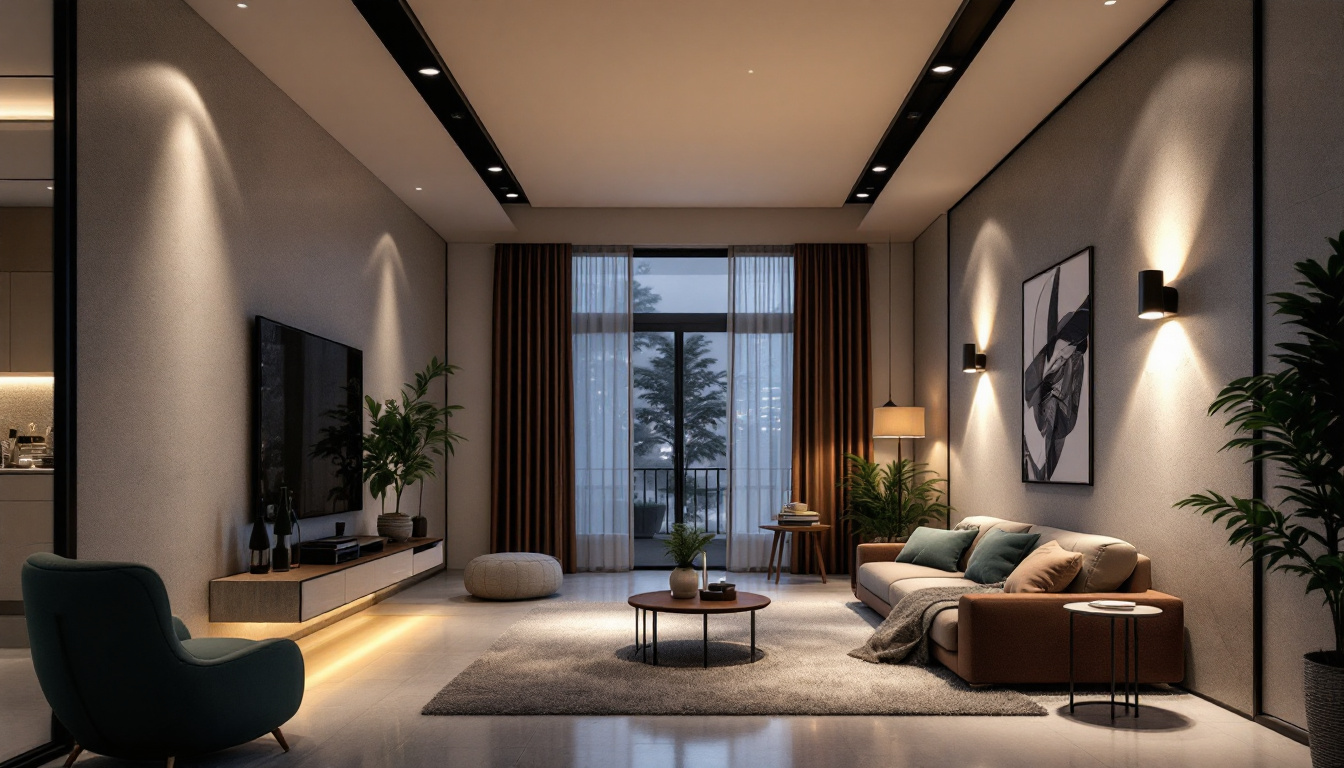
Dock lighting plays a crucial role in ensuring safety, security, and operational efficiency in commercial and industrial waterfront environments. For lighting contractors, mastering the nuances of dock light LED technology is essential to delivering installations that meet client expectations and regulatory standards.
At its core, dock lighting must provide sufficient illumination for loading and unloading activities, pedestrian safety, and surveillance. Traditional lighting systems often relied on high-intensity discharge (HID) lamps, which, while powerful, presented challenges such as high energy consumption, frequent maintenance, and slower startup times. The advent of LED technology has revolutionized this field, offering contractors an opportunity to enhance performance while reducing operational costs.
Before selecting or installing dock light LED fixtures, contractors must evaluate several critical factors:
In addition to these technical specifications, contractors should also consider the layout and operational dynamics of the dock area. For instance, understanding the flow of traffic—both vehicular and pedestrian—can inform strategic placement of lighting fixtures to minimize shadows and enhance visibility during peak activity hours. Moreover, integrating smart lighting solutions, such as motion sensors or dimming capabilities, can further optimize energy use and adapt to varying operational needs. This level of adaptability not only contributes to cost savings but also aligns with sustainability goals that many companies are now prioritizing.
Furthermore, the aesthetic aspect of dock lighting should not be overlooked. While functionality is paramount, the visual appeal of a well-lit dock can enhance the overall atmosphere of the waterfront area, potentially attracting more clients and improving employee morale. Choosing fixtures that blend seamlessly with the surrounding architecture, while still providing robust performance, can create a cohesive look that reflects a company’s commitment to quality and professionalism. As the industry evolves, staying informed about emerging technologies and design trends will empower contractors to deliver installations that are not only effective but also forward-thinking.
LED lighting has become the preferred choice for dock illumination due to its numerous advantages over conventional lighting technologies. Understanding these benefits enables contractors to make informed recommendations and installations that align with client goals.
One of the most significant advantages of LED dock lights is their longevity. LEDs typically have a lifespan exceeding 50,000 hours, which translates to years of maintenance-free operation. This durability reduces downtime and labor costs associated with bulb replacements—a critical consideration in high-usage dock environments. Furthermore, the robust construction of LED fixtures often means they can withstand harsh weather conditions and vibrations, making them ideal for outdoor dock settings where traditional bulbs might fail prematurely.
LED fixtures convert a higher percentage of electrical energy into visible light, often achieving efficacy ratings above 120 lumens per watt. This efficiency substantially lowers energy consumption compared to HID or fluorescent alternatives. For facilities operating multiple docks with continuous lighting, the cumulative energy savings can be substantial, often reducing lighting-related utility expenses by 40-60%.
Moreover, many regions offer incentives and rebates for upgrading to LED lighting, providing additional financial benefits to clients. Lighting contractors who stay informed about these programs can assist clients in maximizing return on investment. Additionally, the reduced energy consumption contributes to a lower carbon footprint, aligning with sustainability goals that many businesses are striving to achieve in today’s environmentally conscious market.
LED dock lights provide superior color rendering, enhancing visibility and safety. The ability to select specific color temperatures allows customization to suit operational needs and environmental conditions. Additionally, LEDs reach full brightness instantly, unlike some traditional lamps that require warm-up periods. This immediate response is particularly beneficial in emergency situations, where quick visibility can prevent accidents and ensure safety.
Advanced LED fixtures often include dimming capabilities and compatibility with smart controls. This feature enables dynamic lighting strategies such as motion-triggered illumination or scheduled dimming during low-activity periods, further optimizing energy use and operational safety. Furthermore, the integration of smart technology can facilitate remote monitoring and control, allowing dock managers to adjust lighting levels in real-time based on changing conditions or specific operational needs. Such adaptability not only enhances efficiency but also contributes to a more streamlined workflow, ensuring that every dock operation runs smoothly and safely.
Proper installation is critical to realizing the full benefits of LED dock lighting. Lighting contractors must adhere to best practices that address both technical and environmental challenges inherent to dock settings.
Begin with a thorough site assessment, including measurements of dock dimensions, identification of potential obstructions, and evaluation of existing electrical infrastructure. This information guides the selection of fixture types, mounting heights, and spacing to achieve uniform illumination.
Fixtures should be positioned to minimize shadows and glare, particularly in areas where forklifts and personnel operate. Mounting heights between 10 to 20 feet are common, but adjustments may be necessary based on dock width and activity zones.
Dock environments often expose wiring to harsh conditions. Use wiring and conduit rated for outdoor, wet, and corrosive environments to ensure longevity and safety. Ground fault circuit interrupters (GFCIs) and surge protection devices are essential to protect the system from electrical faults and transient surges.
Contractors must also confirm that the power supply matches the LED fixture requirements, including voltage and current specifications. Many LED dock lights operate on low voltage DC power, necessitating compatible drivers and transformers.
Compliance with local electrical codes and occupational safety regulations is mandatory. For example, fixtures installed near water must meet specific marine or wet location certifications. Additionally, lighting levels should comply with OSHA guidelines to ensure worker safety.
Documenting the installation process and providing clients with maintenance and operation manuals enhances transparency and supports long-term system performance.
Although LED dock lights require less maintenance than traditional lighting, routine inspections and preventive care are necessary to sustain optimal performance. Lighting contractors should advise clients on maintenance schedules and common troubleshooting techniques.
Regularly inspect fixtures for physical damage, dirt accumulation, and secure mounting. Even the most efficient LED lights can experience reduced output if lenses become dirty or damaged. Cleaning should be performed with appropriate, non-abrasive materials to avoid scratching the lenses.
Check electrical connections for corrosion or looseness, especially in coastal or humid environments. Addressing minor issues promptly prevents system failures and costly repairs.
While rare, LED dock lights may exhibit flickering, dimming, or complete failure. Flickering often results from incompatible dimmers or unstable power supply, which can be resolved by upgrading drivers or stabilizing voltage.
Dimming may indicate driver degradation or thermal issues. Ensuring adequate fixture ventilation and replacing drivers as needed can restore performance. Complete failures typically stem from driver or LED chip malfunction, requiring component replacement.
Lighting contractors who stay abreast of emerging trends can offer cutting-edge solutions that enhance client satisfaction and operational efficiency. The dock lighting sector is evolving with innovations that promise greater functionality and sustainability.
Internet of Things (IoT) integration is enabling dock lighting systems to become more responsive and adaptive. Smart sensors can adjust lighting based on occupancy, ambient light, and operational schedules, reducing energy waste and improving safety.
Remote monitoring capabilities allow facility managers to track system health, energy consumption, and maintenance needs in real time, facilitating proactive management and reducing downtime.
Ongoing improvements in LED chip technology are driving higher luminous efficacy and better thermal management. New materials and packaging techniques extend fixture lifespan and enable more compact, versatile designs suitable for diverse dock configurations.
Additionally, developments in optics allow for more precise light distribution, minimizing light pollution and enhancing visual comfort for workers.
For lighting contractors, mastering the intricacies of dock light LED technology is essential to delivering superior installations that meet the demanding requirements of waterfront operations. By understanding design principles, embracing LED advantages, adhering to best installation practices, and staying informed about future innovations, contractors can provide solutions that enhance safety, reduce costs, and satisfy clients.
With the continued evolution of LED technology and smart lighting systems, the opportunities for contractors to add value and differentiate their services are expanding. Investing in education and practical expertise in dock lighting will position contractors as trusted partners in this specialized and vital sector.
Ready to elevate your dock lighting installations with the latest LED technology? LumenWholesale is here to support your success. We offer an extensive selection of spec-grade lighting products that meet the highest industry standards, ensuring you deliver reliable, high-performance lighting for every waterfront project. Benefit from our unbeatable wholesale prices, free shipping on bulk orders, and the convenience of cutting out the middleman. Make your next project shine brighter while maximizing value and efficiency. Discover wholesale lighting at the best value today and light up the docks with confidence.

Discover essential insights into emergency lamps for home use, tailored specifically for lighting contractors.

Discover the pros and cons of recessed LED lighting compared to its alternatives in this insightful guide for lighting contractors.

Discover how specialized bulb stores play a crucial role in the success of lighting contractors’ projects.

Discover how colored lighting is revolutionizing the work of lighting contractors.